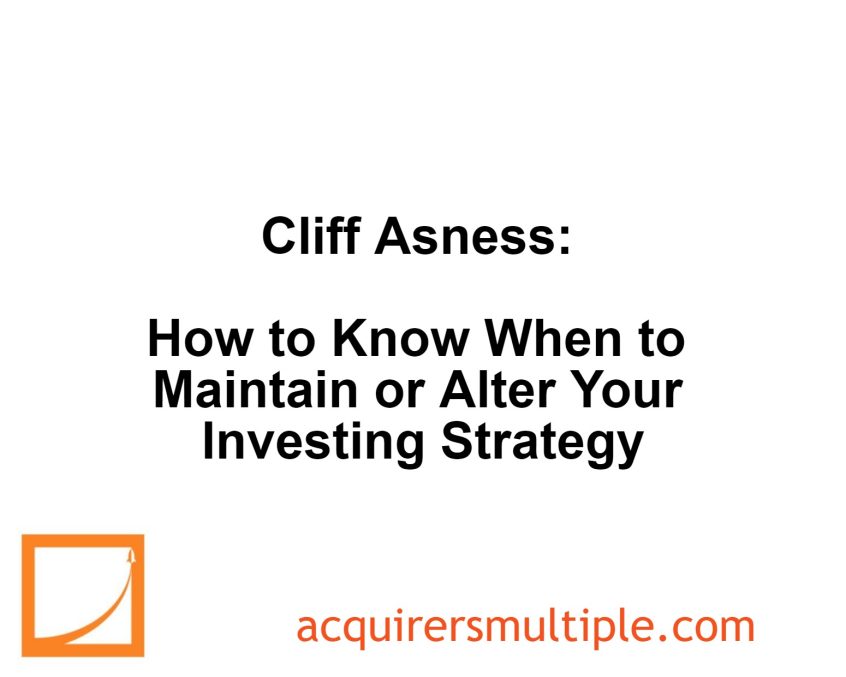In this interview with Carson Group, Cliff Asness discusses the challenge of deciding whether to stick with an investment strategy during a bad period or to make changes. He cautions against always sticking with a strategy, as it assumes that the market never changes.
While often market conditions remain consistent, the risk of a significant shift should not be ignored. When encountering unusual returns, especially over a medium-term period, it’s crucial to investigate the underlying causes.
The example of quantitative value investing’s struggles from early 2018 to late 2020 illustrates the need to thoroughly analyze and understand performance issues.
Here’s an excerpt from the interview:
With that said, the trillion-dollar question when you see a bad period, because that’s when the pressure really comes, is: Do you stick with this, or do you make a change? You can’t have a generic answer; you can’t say, “We always stick with it,” because that’s saying the world never changes.
I think it is fair to say, at least in my experience, that most of the time when the world says, “It’s all different now, and it’s all changed,” it has not been the case. But if that’s true nine out of ten times, you don’t want to take that one out of ten chance of blowing up everything you’ve built because, “Hey, usually it doesn’t change.” That is terrible.
What do you do when you see anomalous—I’ve been saying that word since I was 19, you’d think I’d be able to nail it—when you see weird, I’m just going to say weird, returns? Particularly over a medium-term kind of period where it’s starting to hurt, you have to try to figure out why and if there’s a story.
The most current example is the extremely painful early 2018 through late 2020 period for quantitative value investing. I say quantitative value investing because that’s really just about multiples. A more general, I think a better version of value investing, is the Graham and Dodd kind of version that also considers quality and risk and is more holistic. That died too, by the way, over this period.
But trying to buy things at bargain multiples and trying to sell things at expensive multiples was an utter disaster for that period, and you have to roll up your sleeves and go, “Why?” First, you have to consider every possible explanation.
You can watch the entire interview here:
For all the latest news and podcasts, join our free newsletter here.
Don’t forget to check out our FREE Large Cap 1000 – Stock Screener, here at The Acquirer’s Multiple:



